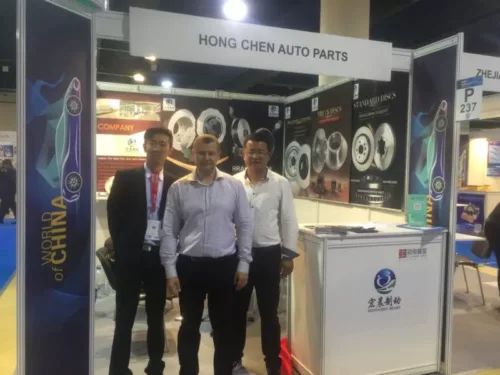Similarly as there are two kinds of grating between the tire and the street surface (mechanical grasping of street surface abnormalities by the versatile tire compound and transient sub-atomic bond between the elastic and the street in which elastic is moved to the street surface), so there are two altogether different kinds of slowing down erosion – rough rubbing and follower grinding. Rough erosion includes the breaking of the glasslike obligations of both the cushion material and the cast iron of the circle. The breaking of these securities produces the warmth of contact. In grating erosion, the connections between precious stones of the cushion material (and, less significantly, the plate material) are for all time broken.
The harder material erodes the gentler (ideally the circle wears the cushion). Cushions that work essentially by scraped spot have a high wear rate and will in general blur at high temperatures. Racing brake discs china At the point when these cushions arrive at their powerful temperature limit, they will move cushion material onto the circle face in an arbitrary and lopsided example. It is this “get” on the plate face that the two causes the thickness variety estimated by the specialists and the unpleasantness or vibration under the brakes revealed by the drivers.
With follower grating, a portion of the cushion material diffuses across the interface between the cushion and the plate and structures an extremely meager, uniform layer of cushion material on the outside of the circle. As the erosion surfaces of both circle and cushion at that point include fundamentally a similar material, material would now be able to cross the interface in the two ways and the securities break and change. Indeed, with follower contact among cushion and circle, the connections between cushion material and the stores on the plate are transient in nature – they are persistently being broken and some of them are ceaselessly improving.
There is nothing of the sort as unadulterated rough or unadulterated follower contact in slowing down. With numerous contemporary cushion equations, the cushion material should be adequately grating to keep the circle surface smooth and clean. As the material can cross the interface, the layer on the plate is continually restored and kept uniform – again until the temperature furthest reaches of the cushion has been surpassed or if the cushion and the circle have not been slept with in totally or appropriately. In the last case, if a uniform layer of cushion material moved onto the plate face has not been set up during bedding or break-in, spot or uncontrolled exchange of the material can happen while working at high temperatures.
The natural and semi-metallic stack of the past were more rough than follower and were seriously temperature restricted. The entirety of the current age of “metallic carbon”, dashing cushions use basically disciple innovation as do large numbers of the very good quality road vehicle cushions and they are temperature stable over a lot higher reach. Tragically, there is no free lunch and the ultra high temperature hustling cushions are insufficient at the low temperatures ordinarily experienced in road use.
In this manner – there is nothing of the sort as an ideal “for what it’s worth” brake cushion. The contact material that is tranquil and works well at moderately low temperatures in and out of town won’t stop the vehicle that is driven hard. On the off chance that you endeavor to drive numerous vehicles hard with the OEM cushions, you will encounter cushion blur, grinding material exchange and liquid bubbling – end of conversation. The genuine dashing cushion, utilized under typical conditions will be uproarious and won’t function admirably at low temperatures in and out of town.
Preferably, to abstain from one or the other enduring screeching brakes that won’t stop the vehicle well in and out of town or with cushion blur on the track or descending the mountain at speed, we should change cushions prior to enjoying energetic auto exercise. Nobody does. The inquiry remains, what cushions ought to be utilized in superior road vehicles – generally low temperature road cushions or high temperature race cushions? For some odd reason, as I would see it, the appropriate response is a superior road cushion with great low temperature qualities. The explanation is basic: If we are driving truly hard and start to run into inconvenience, either with cushion blur or bubbling liquid (or both), the condition(s) goes ahead step by step enough to permit us to just alter our driving style to redress.

